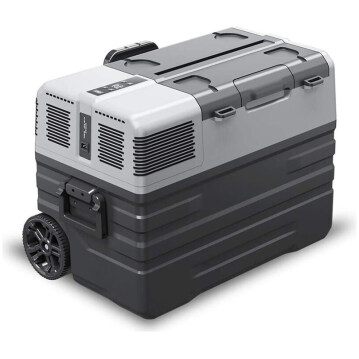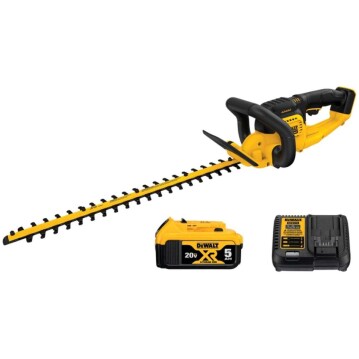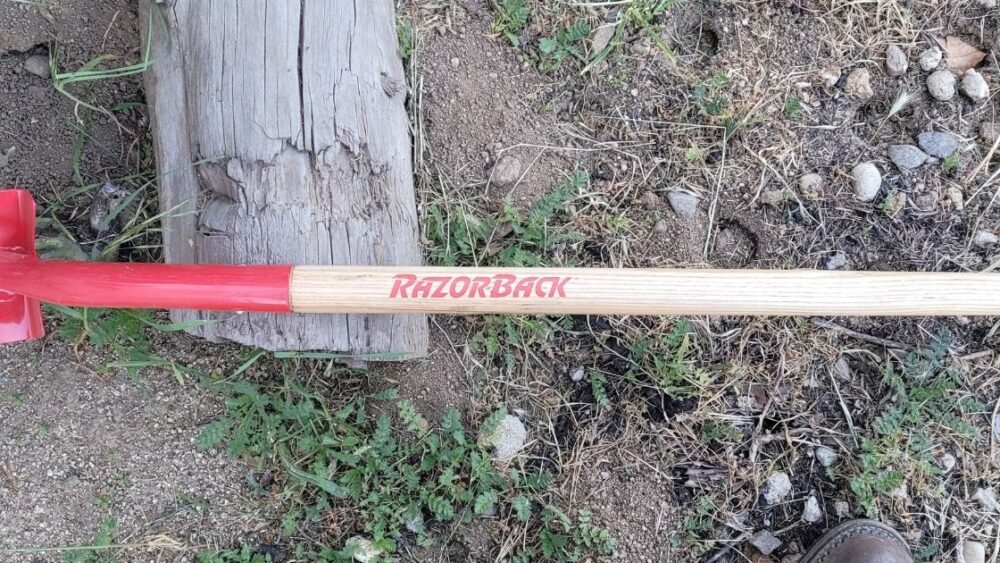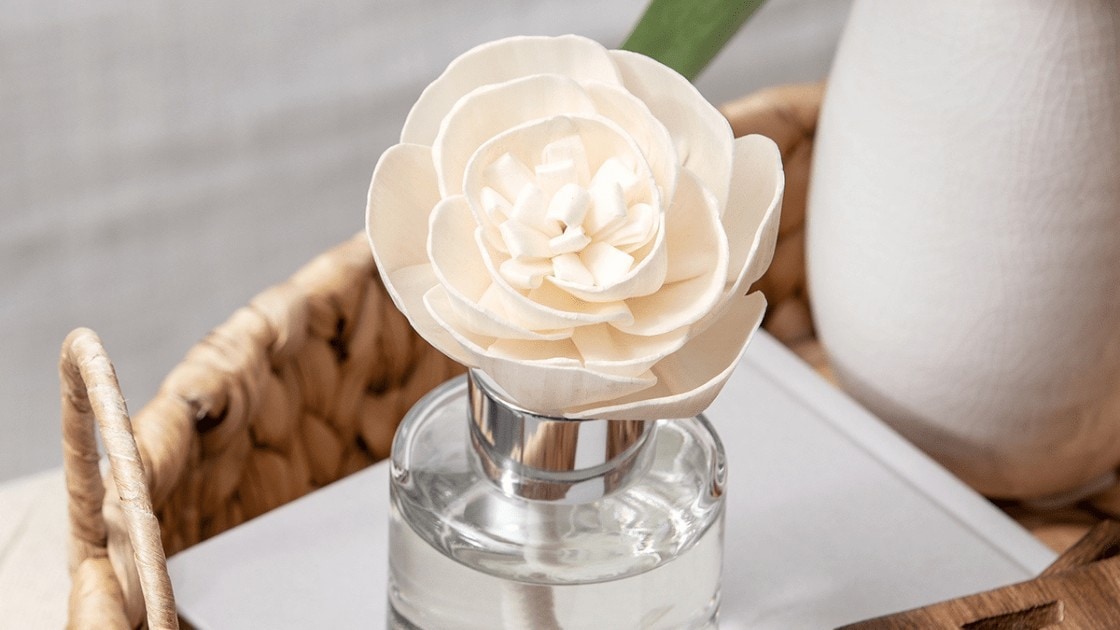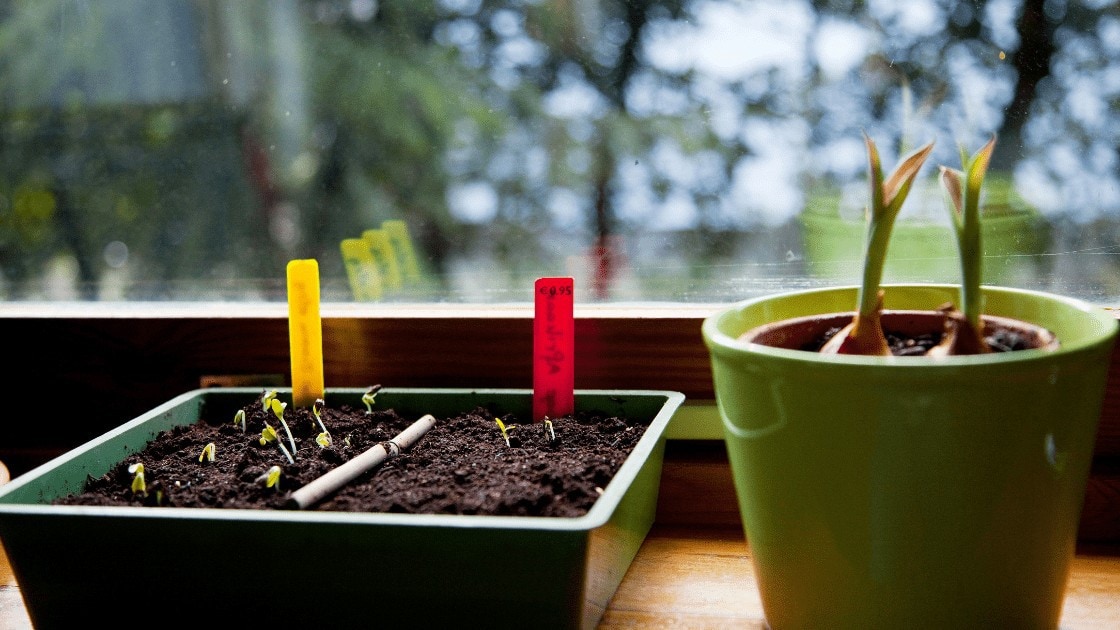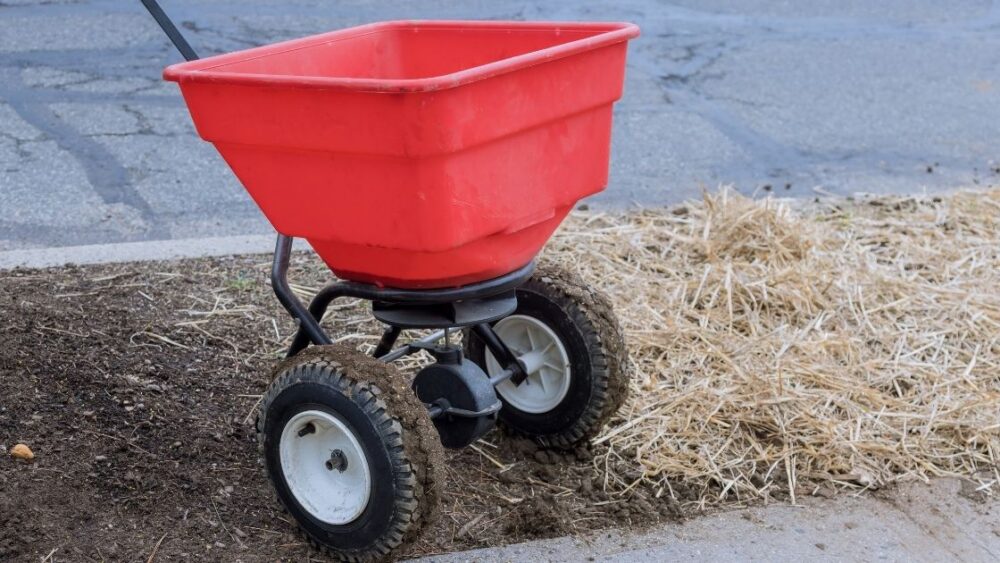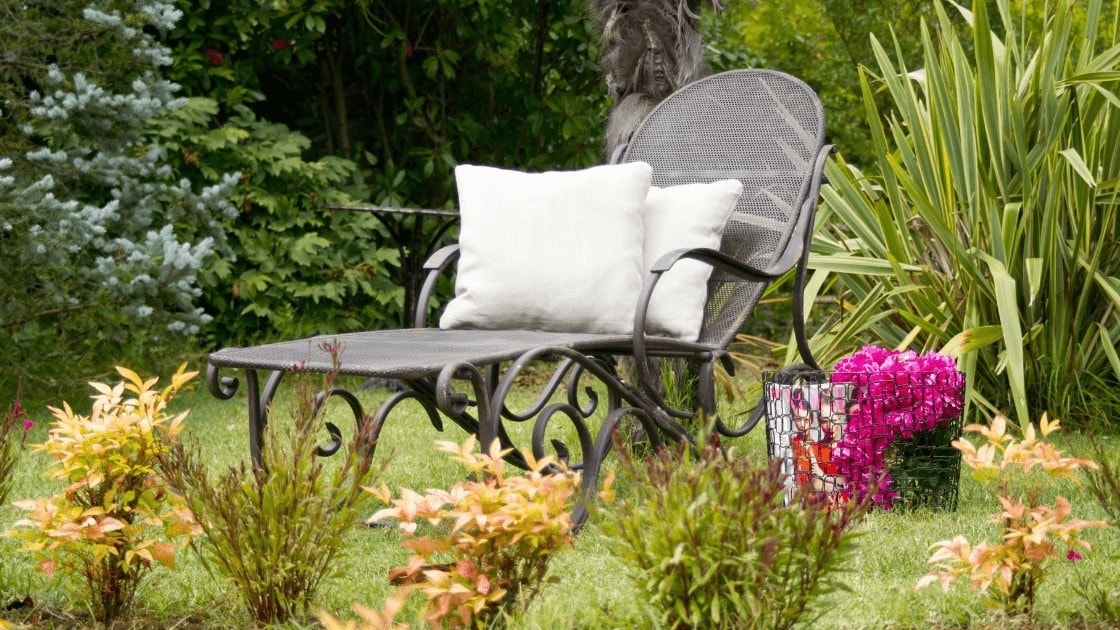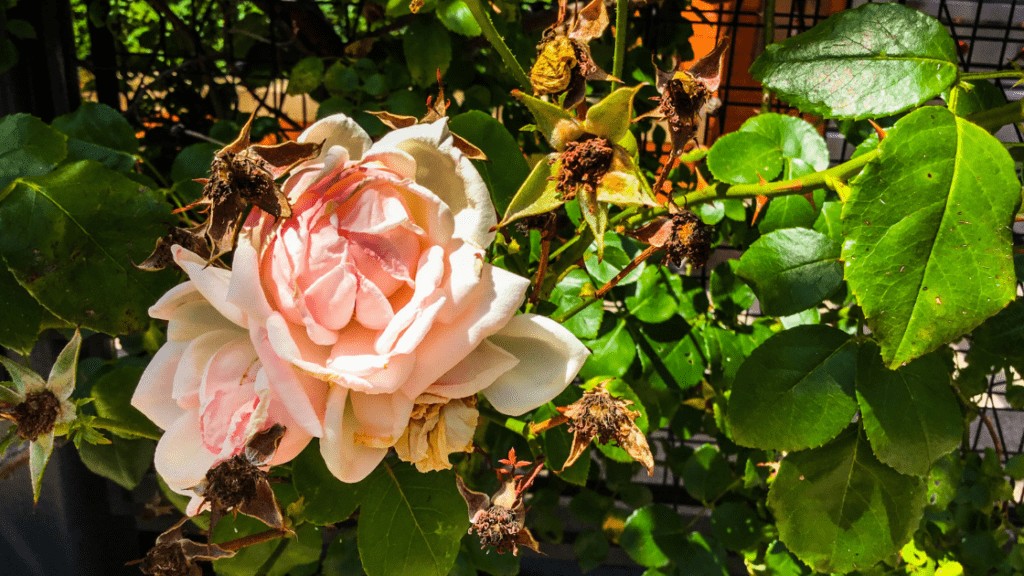
Do you love gardening? Do you have a large collection of flowers that you love to see blooming in the spring and summer season? Don’t know what to do when the rose petals fall off? Then you might be interested in what we are going to tell you next about the Deadheading process of roses and most plants in general.
We all like to observe our garden in spring or early summer: it is an explosion of color, good smell and visual peace that nature gives us. However, whether you are an expert gardener or have just spent a few months caring for your new and beautiful garden, you will know that this time of flowering and absolute beauty does not last forever: all plants go through a period of hibernation and we must help them to over carry it out in the best possible way.
Pruning the plants is something necessary that we must learn to do as gardeners sooner or later, because otherwise we could cause that small plantation of beautiful flowers that we put with so much illusion in our garden during the spring, will end up spoiling and becoming a set of withered flowers without life and without the possibility of flowering again the following year.
Browse our Affiliate Products
For all these reasons and to help you make your rose garden look beautiful year after year, we are going to give you the keys to make this deadheading process simple and regular in your routine as a gardener.
Take note!
What Is Deadheading?
The first thing we need to do to understand what this process of annual sanitation of our roses is, is to know in depth the term Deadheading. This curious term has the following definition: Deadheading applied to the world of gardening refers to the process of pruning plants and flowers through which we seek to remove all the heads and old parts of the plant, with the sole purpose of promoting new flowering and prevent it from becoming sick and its growth is stagnant.
The growth cycle of a plant, whatever it is, begins and ends with the flowering season, so if we want to continue growing and creating seeds year after year, we must try to go pruning all those withered parts that are left and that will encourage a new flowering much more beautiful and abundant than the previous one.
One of the most common mistakes, especially among inexperienced gardeners who are afraid of the process of pruning their plants, is to let the roses grow and remain in bloom until the last day. This will leave our garden looking withered and unhealthy, which will inevitably leave us with a much sadder image that will not bring us any sense of peace; quite the opposite.
Do not be afraid to cut off the head of your rose bush when all its petals have lost their beauty and vigor; you will be giving new life to the flower, as well as to your garden in general.
In addition, click here to view our affiliate selection of garden tool set here: Garden tools Sets
How To Do Deadheading?
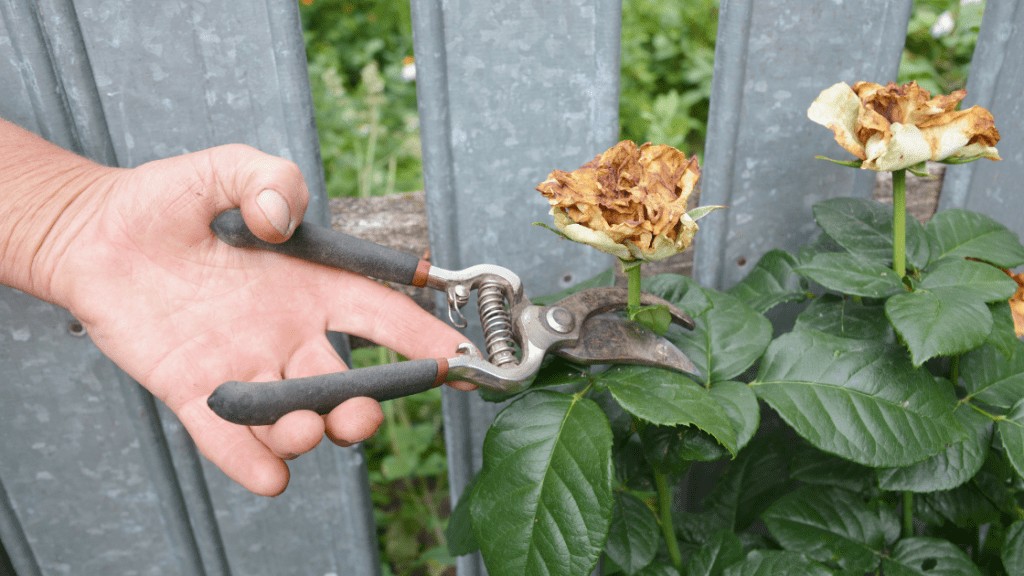
We have already explained the theory, which gives us useful information that we should always remember but not solve the problem completely. The next big question to be answered is: how to do the specific pruning process that we have just explained to you?
The deadheading of our rosebushes is not something too complicated to carry out, because although at first it may seem a bit tedious and will force you to invest more hours in the care of your garden, over time it will become something you will do automatically as soon as you detect that your plant needs it.
There are even some gardeners who qualify this pruning process as a really relaxing and therapeutic activity that helps them connect with nature and improve their mood. It’s worth learning, isn’t it?
If your interested in other fragrance plants and flower, check out our article:
What You Will Need?
The first thing we will need to do to perform our pruning correctly is to equip ourselves properly for it:
- Clean and sharp pruning shears (it is preferable that we buy new ones)
- Gardening gloves
- A large plastic bucket that will serve to store all the stems and dead heads that we can
How Is It done?
The key for our rose bushes to grow again in a healthy way and with all the necessary vitality to bloom again when the occasion comes is to prune its stems properly. The easiest way to do this without making mistakes is to always prune below the worn-out flower and just above the first bunch of healthy, full leaves on the stem.
It is important that we cut at a 45-degree angle, never straight; this way we will allow water from sprinklers or rain to run off and not start to accumulate in the stems. There is also the possibility of pruning all the stems completely, making sure that the whole plant remains free of seeds and grows back strongly after the winter season.
In any case, the best way to carry out this pruning is by cutting above the sets of 3 or more leaves ( also called true leaves ) and making sure that the bundle we cut is oriented in the direction in which we want the stem to grow back later; if the leaves point outwards, the new stem will also grow outwards.
Which Roses To Deadhead?
The deadheading process of our roses is not only to encourage new flowering, but also to help us keep them healthier and free from diseases usually caused by fungi and insects.
In order to identify which stems, need to be cut and which flowers might be getting sick, we should look at the following aspects:
Dead Roses
he first sign to watch out for is this: after flowering the roses begin to wilt and bend downwards, causing all their petals to become loose to the point that a simple breeze blows them out of the bud and onto the ground. When we observe this, it is time to carry out the pruning.
Conflicting Roses
There are also times when we can observe that some roses compete to take the place of others and end up becoming entangled. This will only cause the growth of the rose bush to atrophy and its appearance to worsen, so we must prune them correctly to reorient the stem and encourage it to grow in the right direction again.
Roses That Grow Inwards
It is important that the lower base of our roses receive as much water and sunlight as possible, which could be impossible if their stems are growing inward and prevent that sunlight from reaching the rosebush junction. If this happens, we may find that our plant is beginning to get sick because it has developed fungus, so we should prune those stems quickly and encourage them to grow outwards again.
When Not To Deadhead
Deadheading is a beneficial process that most gardening experts advise to carry out in order to favor a healthy growth of our plants and that makes their flowering processes constant. However, it is always strictly necessary? No, the reality is that it is not.
If we observe a real problem in our rose bush that is seriously endangering its health and growth, pruning will be something we must do to prevent it from dying. However, if our rose bush is completely healthy and we do not want to interrupt its natural cycles of flowering and ripening, we do not have to prune it before its time. It is all a question of taste.
There are people who like their rosebushes to produce seeds because this attracts local birds to eat them, filling their garden with life and music. Therefore, the only thing you will have to consider carrying out or not the pruning is your own personal preferences as a gardener and the health of your rosebushes. Nothing else.
Final Thoughts
In conclusion, having a large garden full of beautiful rosebushes of all species can be a real blessing if we know how to take care of them. Every effort has its reward and if there is one thing that is true in the world of flowers and plants, it is that if a person takes care of them and keeps them healthy over the years, they will always bloom again to thank you and announce the arrival of a new spring.
Don’t hesitate to put all these tips into practice and start enjoying the beauty of your rose bushes!

